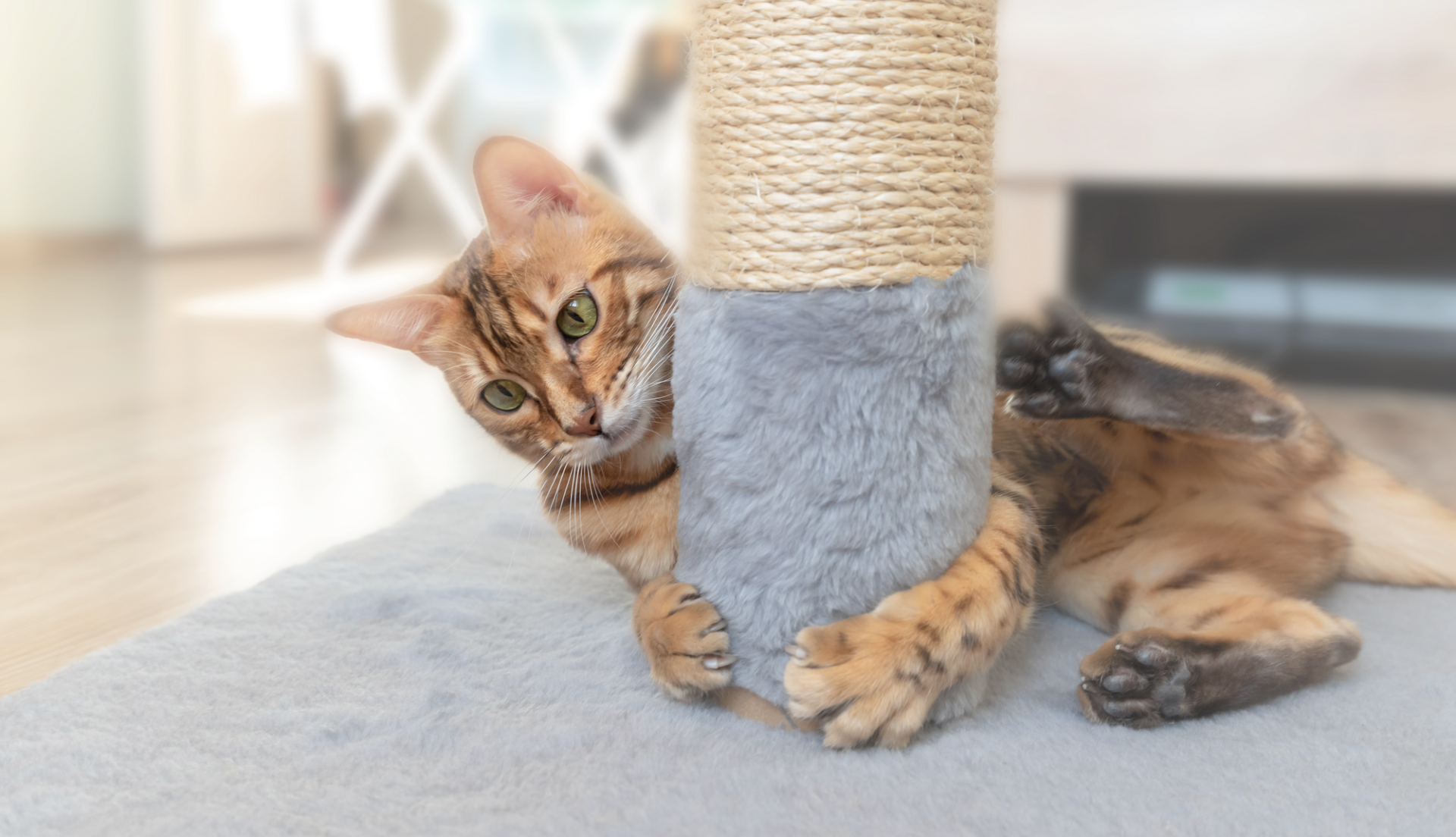Cats can be hard to understand! You know purring means they’re happy, but what does obsessive grooming mean? We’ll translate some worrying cat behaviors and how worried (if at all!) you need to be.
Which Cat Behaviors Should You Worry About?
When it comes to cat behavior concerns, some are obvious! If your cat is biting you or refusing to use their litter box, you can probably guess that they’re unhappy about something. But what if they’re chewing on household objects or only peeing in your plant pot? It can be tricky to translate what your cat is trying to tell you.
Let’s go over some common cat behavior and body language to tell you which behavioral issues are irritating but innocuous, and which might require a visit to the vet.
Scratching
Are the arms of your beloved armchair starting to look like they were run through a shredder? We feel your pain. The good news here is that scratching furniture, windowsills, and even walls is a perfectly normal behavior. It’s a way for cats to mark their territory, and the feline equivalent of using a nail file.
Should you be worried? Nope—this one’s 100% normal. Get them a scratching post or two and redirect their scratching to approved zones.
Chewing
Does your cat carry hair ties around like a pacifier or leave drool marks and teeth holes on your couch cushions? If your cat has a major oral fixation, it’s most likely a sign of boredom.
Cats are highly intelligent and if they were in the wild, would be faced with constant mental stimulation. Domestic cats have a lot more slooooow afternoons, particularly if their humans are gone all day. Try to redirect this behavior by providing engaging toys they love that can take the brunt of their gnawing and chewy treats to calm them down!
Should you be worried? No, no need to worry—but consider picking up some new cat toys.
Biting
When it comes to alarming cat behavior, biting is at the top of the list. Gentle love bites while grooming or during a vigorous play sesh are normal cat behavior with other cats. When it comes to this cat behavior with humans, it’s up to you whether you want to allow it if it’s gentle or discourage it if they become too rough.
However, more severe bites should be taken seriously. Biting is often an aggressive cat behavior, and can be their way of asserting dominance or protecting what they see as their territory. On the other hand, it can also be a sign of fear or self-protection if a cat feels vulnerable or is in pain.
Should you be worried? If biting persists, becomes worse, or seems to follow any other signs of distress, it’s time to have a conversation with your vet.
Itching or Excessive Grooming
Just like us, cats appreciate a lil’ bit of self-care. But what does it mean if your cat’s normal 20-minute grooming session suddenly starts to last over an hour and seems more than a little obsessive? That’s when it’s time to pay attention.
If your cat is fixated on scratching or grooming for long periods of time or in one particular spot, that’s probably a sign of skin irritation or even emotional distress. Grooming can be a self-soothing behavior, but over-grooming can lead to bald patches or even alopecia.
Should you be worried? Possibly. Keep an eye on your cat’s behavior and look at the spots they’re focused on. It could be that they just have a bug bite or something sticky in their fur, but if the behavior persists and you don’t see anything, make an appointment with your vet.
Litter Box Issues
If you’re starting to smell the distinctive stink of cat pee in places other than the litter box, we offer our condolences. Get a good enzyme cleaner and let’s figure out the problem! There are many things that can cause your normally house trained cat to start peeing outside their litter box.
Urine marking is a classic territorial boy cat behavior, particularly among unneutered males. If you catch them spraying on objects around the house, chances are they’re trying to mark their territory. On the other hand, if your cat is peeing in hidden places or trying to find spots similar to their litter box like the soil of a potted plant, that’s more likely a sign of distress.
Figuring out what your cat’s behavior means can be a puzzle, but you can keep this guide in your back pocket like your personal English-Feline dictionary. You’ll be able to understand your cat a little bit better and give them exactly what they need to
feel better—after all, what are friends for?,

